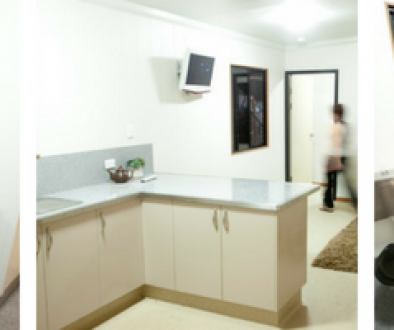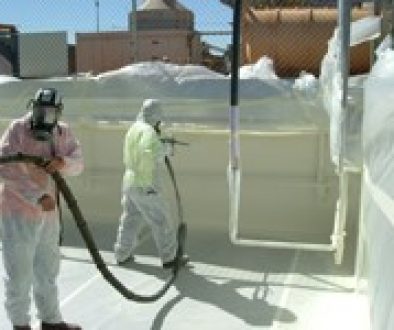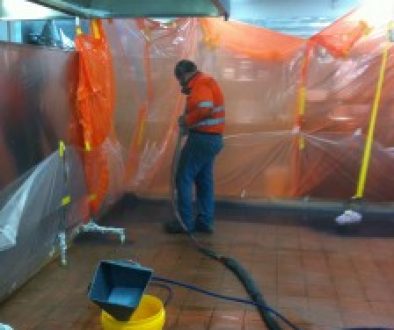Floor Slip Resistance Tests – Why are They so Important?

Getting a new Floor? Thought about Floor Slip Resistance Tests?
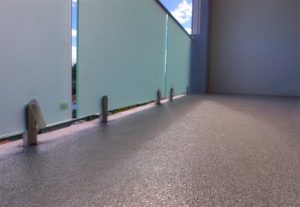
In an effort to verify safe flooring, it is fast becoming a routine practice for property owners, specifiers and architects to request floor slip resistance tests prior to specifying any floor coating for an upcoming project. The advantage here is that the building owner can be confident that the new flooring will sustain its slip resistance for a period of years as well as help guard the safety of the people who visit, work or live onsite from slips and trips.
It should be noted that here, in Australia, the slip resistance of any new floor surface should be measured in accordance with AS/NZS 4586:2004 – Slip Resistance Classification of New Pedestrian Surface Materials. This standard outlines five different methods to measure slip resistance including:
- Wet Pendulum
- Wet Pendulum and Dry Floor Friction
- Dry Floor Friction
- Wet/Barefoot Ramp
- Oil-Wet Ramp
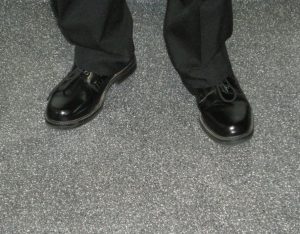
Another consideration that needs to be taken into account is the slope of the flooring surface. This is where the older Ramp Test or ‘R’ Rating was used. This test is carried out by a laboratory technician standing on a coated ramp at various angles of incline either barefoot or with a simulated standard shoe sole (Four S) which is generally accepted as the material to assess the slip resistance. However, it is not always possible to carry out a Ramp Test on site and that is why Standards Australia and Rhino Linings recommend a “Wet Pendulum Method” to determine the slip resistance.
The relationship between the Pendulum Test and Ramp Test
| Mean Pendulum | Wet Pendulum Class | Ramp Test (‘R’ Rating) |
| (35-44) | X | R9 – slippage at a 3 to 10 degree angle of elevation (this surface is fairly slippery) |
| (45-54) | W | R10 – slippage at a 10 to 19 degree angle of elevation |
| (45-54) | W | R11 – slippage at a 19 to 27 degree angle of elevation |
| (>54) | V | R12 – slippage at a 27 to 35 degree angle of elevation |
| (>54) | V | R13 – slippage upwards of 35 degree (this surface is highly slip resistant) |
Table 3, noted below, defines the Minimum Pendulum and equivalent Ramp Rating Recommendations for Specific Locations This is provided for informational purposes only. Sourced from CSIRO Standard HB 197:1999 An Introductory Guide to the Slip Resistance of Pedestrian Surface Materials.
Minimum Pendulum and Older Ramp Ratings for Specific Locations
| Location (These are a guide only) | Pendulum Rating | Ramp Rating |
| Accessible internal stair nosings (dry) – handrails present | X | R10 |
| Accessible internal stair nosings (wet) – handrails present | W | B or R11 |
| Communal change rooms | X | A |
| Entry foyers hotel, office, public building – wet | X | R10 |
| Entry foyers hotel, office, public building – dry | Z | R9 |
| External colonnade, walkways & pedestrian crossing | W | R10 |
| External ramps | V | R11 |
| External stair nosings | W | R11 |
| Fast food outlets, buffet food servery areas | Z | R9 |
| Hospitals and aged care facilities – dry areas | Z | R9 |
| Hospitals and aged care facilities – ensuites | X | A or R10 |
| Internal ramps, slopes (greater than 2 degrees) – dry | X | R10 |
| Lift lobbies above external entry foyer | Z | R9 |
| Other separate shops inside shopping centres | Z | R9 |
| Other shops with external entrances – entry area | X | R10 |
| Shopping centre excluding food servery areas | Z | R9 |
| Shopping centre – food court | X | R10 |
| Shop and supermarket fresh fruit & vegetable areas | X | R10 |
| Supermarket aisles except fresh food areas | Z | R9 |
| Swimming pool surrounds & communal shower rooms | W | B |
| Swimming pool ramps and stairs leading into water | V | C |
| Toilet facilities in offices, hotels, shopping centres | X | R10 |
| Undercover concourse areas of sports stadium | X | R10 |
Cleaning Slip Resistant Flooring Surfaces
Finally, cleaning of a slip resistant floor is also very important and the grease/dirt can build up in between the highs and lows, thereby significantly reducing the grip. Cleaning with a foaming agent in warm water is the best way to remove dirt, grease and grime. Be aware that some cleaning chemicals can also make your floor slippery. Rhino Linings also try to have our flooring contractor’s state in their Warranty that proper cleaning and regular inspection (6 to 12 months) is an essential part of maintaining the Warranty of a floor.
In addition to correct maintenance and cleaning, always keep in mind that when choosing a suitable floor coating for your next project, whether it be epoxy, polyaspartic, polyurea, polyurethane, vinyl or even tile, it is extremely important that you make sure that your choice provides a suitable slip resistant surface throughout the entire lifespan of the coating. Most importantly, ensure you have floor slip resistance tests done to safeguard yourself against possible legal action from slips and trips.
For further information, you can contact Rhino Linings directly at 1300 887 780 to discuss your requirements or contact us to find out more about the Rhino Linings product range. You can email us at info@rhinolinings.com.au
DISCLAIMER: Note that this article is Rhino Linings Australasia Pty Ltd interpretation of AS/NZS 4586:2004 – Slip Resistance Classification of New Pedestrian Surface Materials and accepts no liability for the content supplied in this article, or for the consequences of any actions taken on the basis of the information provided, unless that information is subsequently confirmed in writing. Please refer to the actual standard available at Sai Global prior to making any decision.

